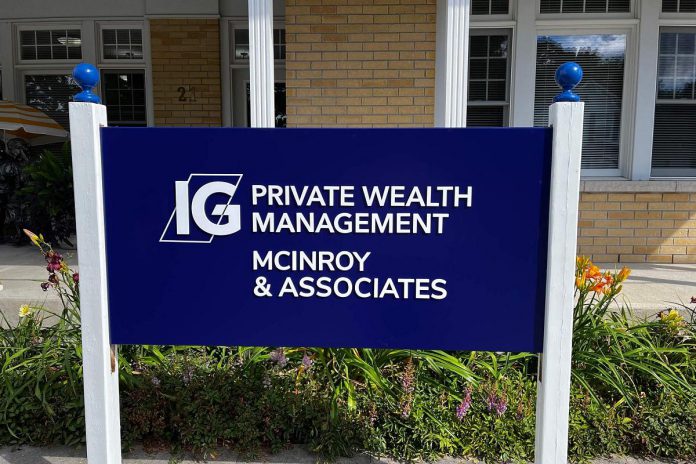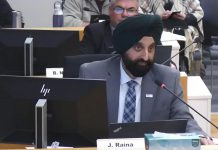
For all we think we know, we don’t know what tomorrow will bring. But what is clear is those who plan now for what will happen to their assets when they pass away will typically walk with a lighter step.
According to executive financial consultant Adam McInroy CFP, CLU of Kawartha-based McInroy and Associates Private Wealth Management, estate planning is one of the six pillars of a well-constructed financial plan, the others being cash flow management, risk mitigation, investment planning, retirement planning, and tax planning — all of which come into play to varying degrees when developing and implementing an estate plan.
“A good financial plan is not just about how much wealth you have today,” Adam says. “It’s also about how you plan and prepare for the next generation to receive your wealth while managing the tax liability, and knowing what tax planning can happen now to allow for a smooth transition and avoid potential surprises, whether that be income taxes or probate fees.”
Many clients, Adam explains, ask him how they can avoid paying probate, which is known as estate tax in the province of Ontario. However, estate tax can be insignificant in value when compared to the income tax liability, which is applied to income garnered from all sources in the year of your passing. That can include the market value of an RRSP or RRIF, even when there is a named beneficiary, and the deemed dispositions of capital property acquired, vacation property, or investments.
Adam says a well-thought-out and implemented retirement income strategy will look at opportunities to smooth out income taxes paid throughout retirement, thereby avoiding a surprise income tax bill when it comes to your estate.
For example, leaving your RRSPs, RRIFs, and capital property to your surviving spouse will defer any tax owing until your spouse passes. If you own more than one property, evaluating which property has the highest value as your principal residence may give you the opportunity to avoid any capital gain on that property, therefore eliminating any income tax liability.
Then there are charitable donations that, if made in the year of your passing, will reduce any tax owing on your final tax return. Unused capital losses can also be used to reduce income tax in the year of one’s death.
As for mitigating the impact of probate fees, Adam says common and simple strategies include adding joint owners of assets and naming direct beneficiaries to plans and policies.
“There are situations, though, where those simple probate planning strategies just don’t make sense,” he points out. “For example, it may not make sense to name a minor as the beneficiary of an RSP account because they’re not legally able to work with that money until they reach age of majority. Also, naming joint ownership on real estate may have unintended consequences, both for you as the owner and the person who has just become the joint owner.”

Adam says more complex situations such as trusts require more advanced strategies around probate planning as well as consultation with other professionals.
“We work with our team, but also the client’s lawyer and accountant, to ask ‘Does a trust make sense?’ whether that be an alter-ego trust, a joint spouse trust, or a common-law trust.”
“We also look at insurance trusts. Does that make sense? And does having multiple wills make sense? Some of our clients are business owners who are incorporated. In Ontario, they’re allowed to have two different wills — one for their business and one for themselves personally. As of right now in Ontario, only one will needs to go through probate. By having the will with lower assets go through probate, this can eliminate significant probate fees.”
Probate and income tax considerations aside, Adam and his team sometimes meet with clients who want to gift money to a non-profit organization near and dear to their heart.
“I start that conversation with the questions ‘Why that organization?’ and ‘What is your hope in terms of how that money is going to be used?'” Adam says. “Everyone has a different goal in mind in terms of how that money is going to be used. Some just want a clean, simple hand-over — the organization gets a lump sum and it’s done. Others take a much more thoughtful approach, saying ‘I don’t want them to get this windfall this year and be shortchanged in the following years.’ That’s a big conversation we walk through with clients.”
“Having that foresight, and that discussion, allows for the setting up of the foundation they want to establish, and funding it while they’re still alive but also funding it upon their passing, knowing that it’s self-sufficient and there are no tax filings required.”

Another common desire of early retirees is helping their adult children out.
“The one thing I caution people about is that they have an understanding of how strong their overall financial plan is,” Adam notes. “There are people who have more than enough cookies in their cookie jar to dole out a certain amount of money to their kids. But just recently, someone talked to me about a friend who gave all their money to their kids to make sure there were no estate taxes or probate fees, and she wanted to do that as well.”
“I said ‘Do you recognize what that means? If you want go golfing in Myrtle Beach, you’re now asking your kids to give you an allowance. If you need PSW support later in life, you’ll be at the mercy of your children because you have no more money.’ It’s about making an informed decision on what doling out $100,000 to little Johnny might mean for you down the road.”
“Fortunately, we were able to give the client real numbers about what her estate could expect to pay in probate fees if she were to pass away that day,” Adam points out. “Once she had that number, she simply said ‘That’s it? Why would I give away my independence to save that nominal amount?'”
Still another of Adam’s clients — a widow moving up in a tax bracket — was motivated to give some of her money away for a more self-serving reason.
“Her immediate concern wasn’t her estate,” Adam recalls. “It was ‘How do I save taxes today?’ What we were able to do was show her how, by the strategic donation over time of her assets, she would see a net difference of about $2,000 per year in taxes saved. That’s significant.”

When all is said and done, Adam says proper estate planning can either be complex, based on your assets, or relatively simple.
“Estate planning for a young family might be as simple as asking ‘Do we have life insurance in place, do we have a will and power-of-attorney in place, do we have the proper designated beneficiaries on the accounts?'” he says. “Those things seem trivial until there’s a life event, and then they’re really critical. Those small things, and having informed discussions around them, are key to estate planning and a cornerstone of what we do with our clients.”
Whatever a client’s needs and desires are when it comes to estate planning, McInroy and Associates takes a collaborative approach that includes conversations with the client’s lawyers and accountants. This provides Adam and his team not only with a solid overall picture of a client’s hard-earned wealth, but also helps identify the best strategies for clients to manage that wealth — both now and for when they have passed on.
McInroy & Associates Private Wealth Management is located at 21 King Street West in Bobcaygeon. You can email Adam at adam.mcinroy@igpwm.ca or call 705-748-1950. For more information about McInroy & Associates Private Wealth Management, visit www.mcinroypwm.com.
Investors Group Financial Services Inc.
This is a general source of information only. It is not intended to provide personalized tax, legal, or investment advice, and is not intended as a solicitation to purchase securities. Adam McInroy is solely responsible for its content. For more information on this topic or any other financial matter, please contact an IG Wealth Management Consultant.
This is one of a series of branded editorials created in partnership with McInroy & Associates Private Wealth Management. If your business or organization is interested in a branded editorial, contact us.


























